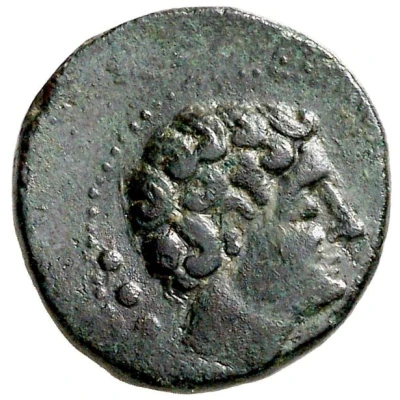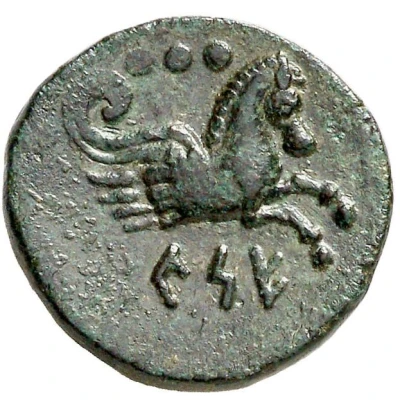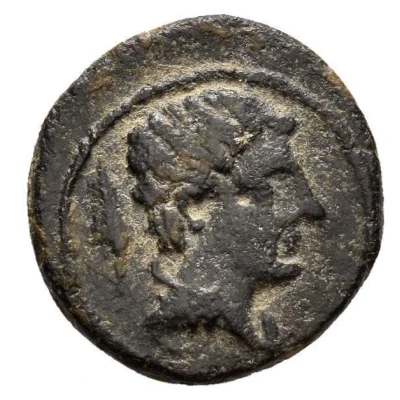


© Aureo & Calicó S.L., subastas numismáticas
¼ Unit 195 BC - 170 BC
| Bronze | 2.62 g | 15.38 mm |
| Issuer | Cessetani people |
|---|---|
| Type | Standard circulation coin |
| Years | 195 BC - 170 BC |
| Value | ¼ Unit |
| Currency | Unit (first half of the 2nd century BC) |
| Composition | Bronze |
| Weight | 2.62 g |
| Diameter | 15.38 mm |
| Shape | Round (irregular) |
| Technique | Hammered |
| Demonetized | Yes |
| Updated | 2024-10-10 |
| Numista | N#340677 |
|---|---|
| Rarity index | 94% |
Reverse
Forepart of pegasus to the right, three dots above.
Script: Iberian (Levantine)
Comment
Reverse inscription:"KSE" written from left to right in northeastern Iberian script.
Interesting fact
The Cessetani people were a tribe that lived in what is now modern-day Spain, and their coinage was characterized by unique designs and inscriptions that reflected their cultural and religious beliefs. One interesting fact about the ¼ Unit coin from the Cessetani people is that it features an image of a wild boar on one side, which was likely a symbol of strength and fertility for the tribe.



